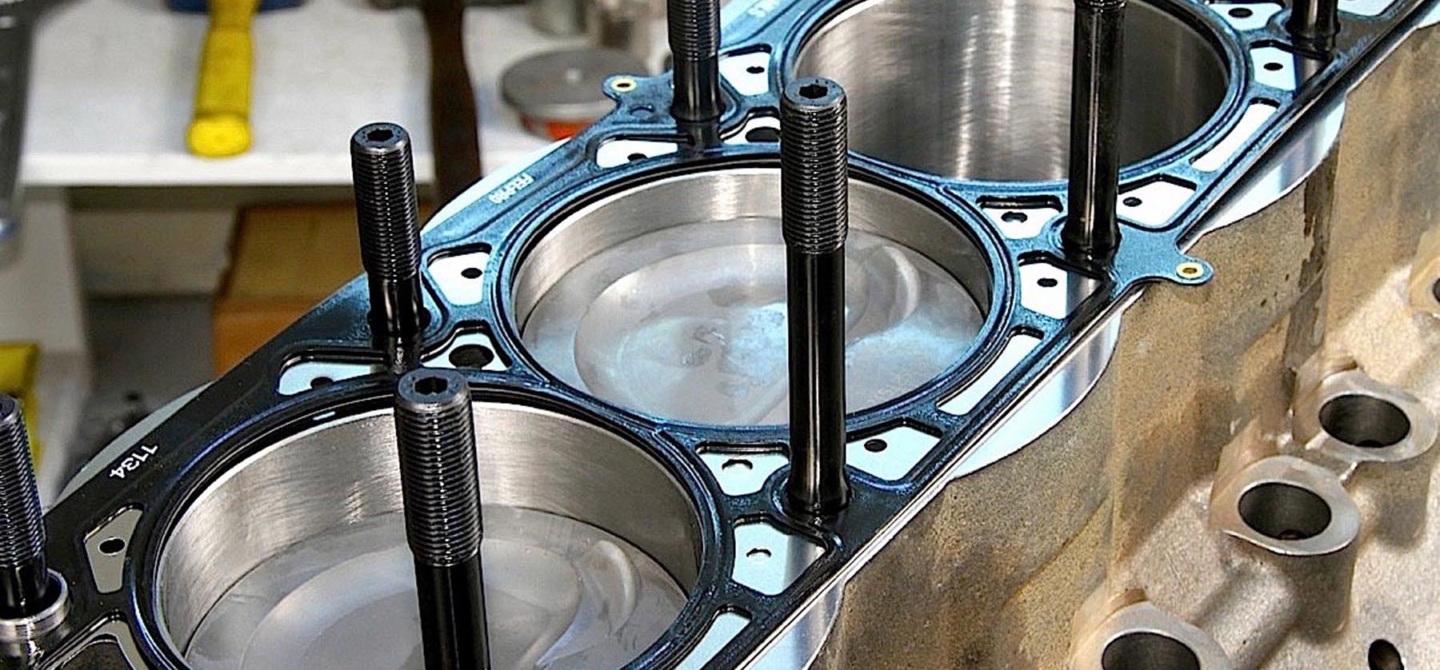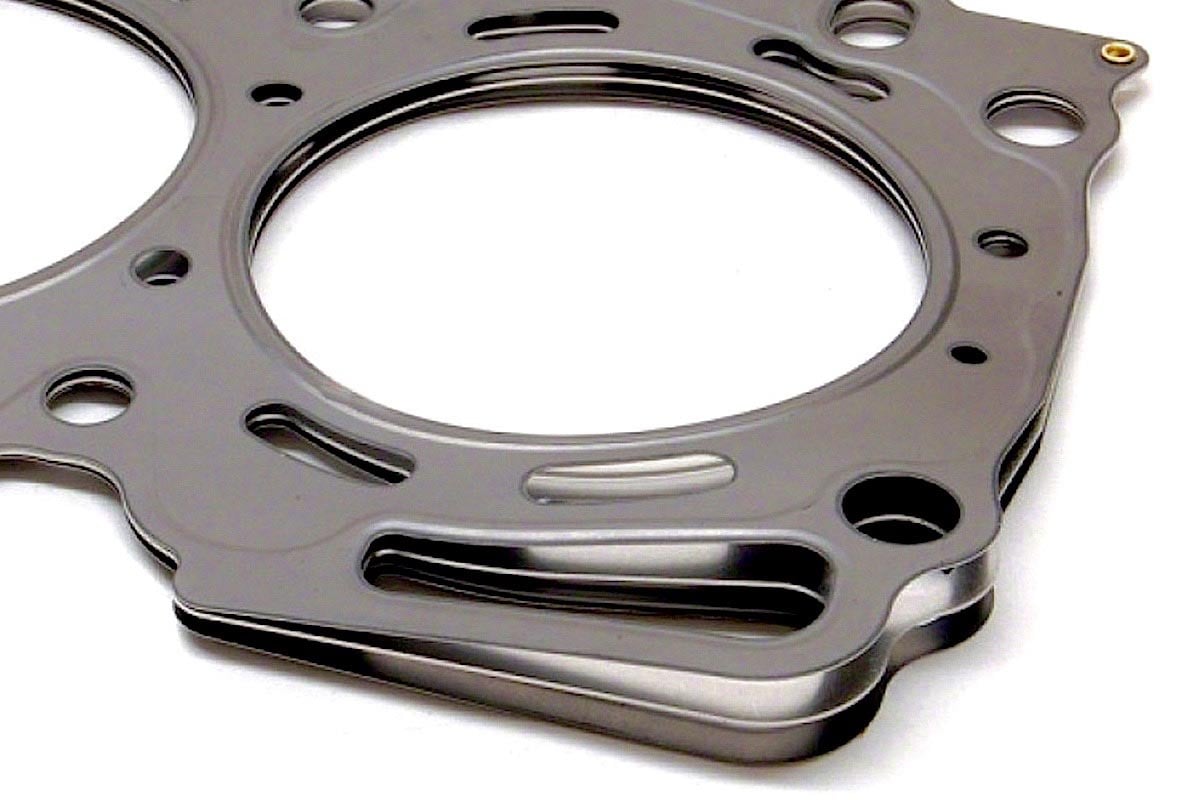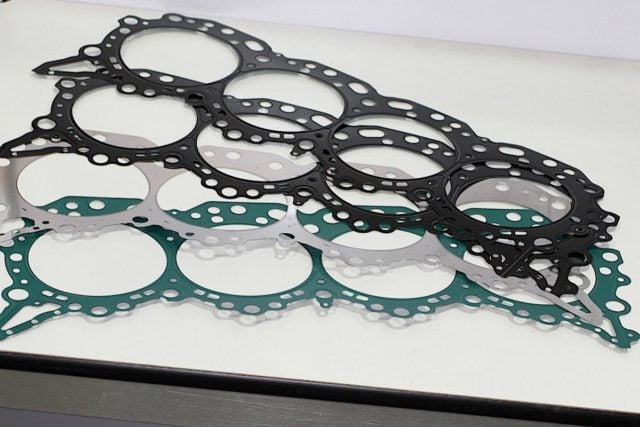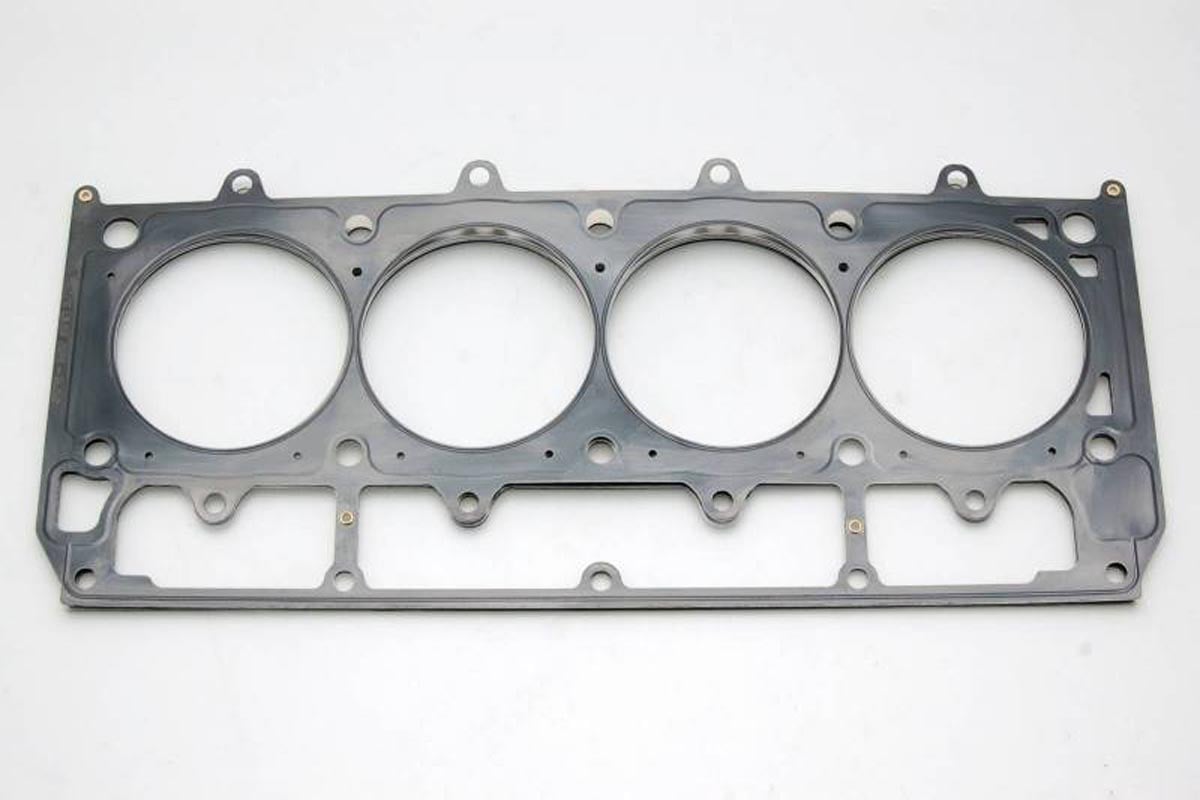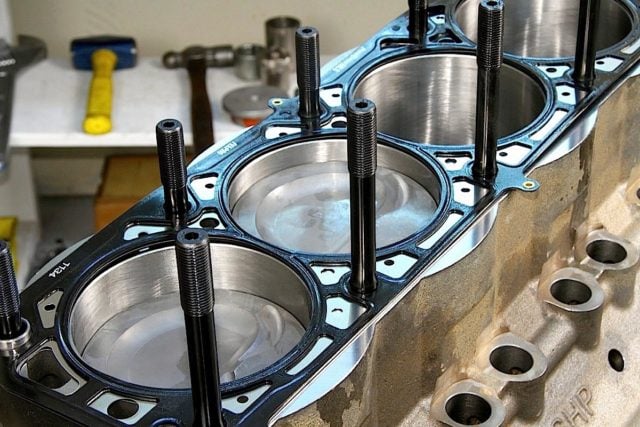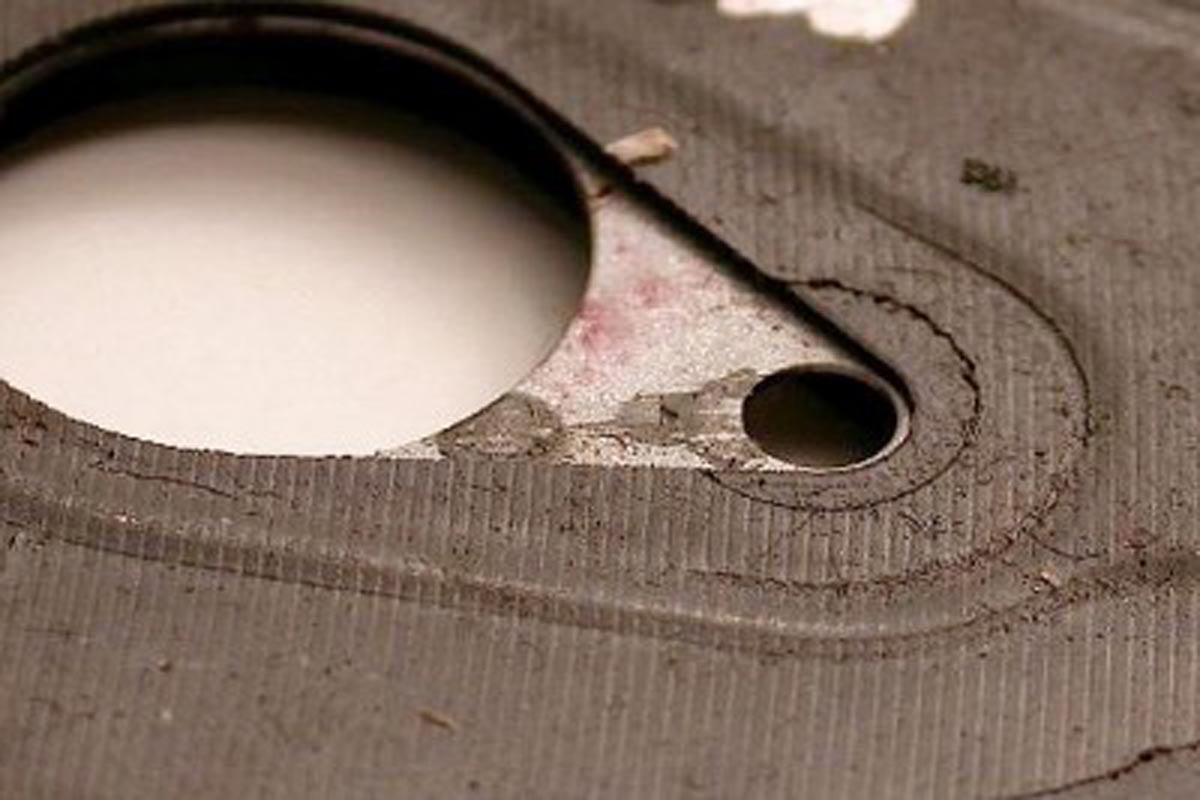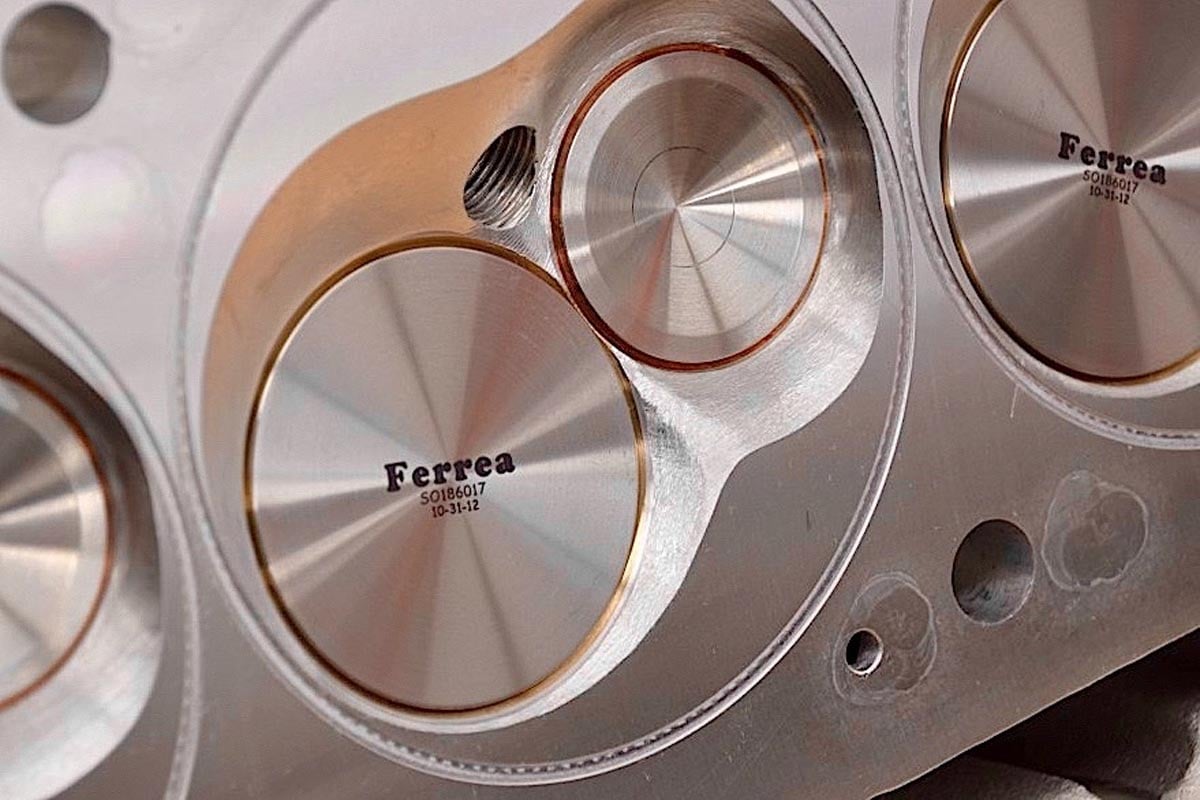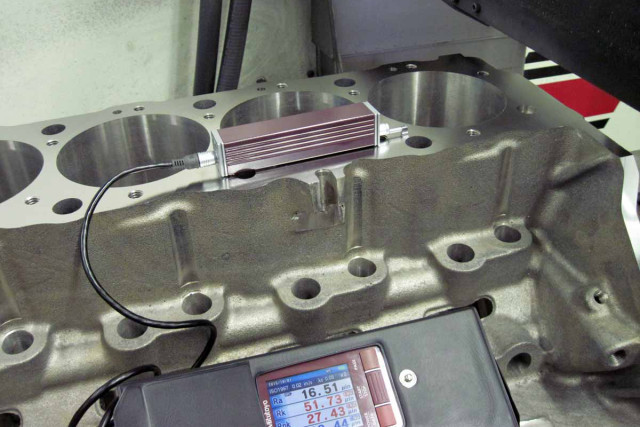Back when the automobile was in its infancy, things were very basic. You could rebuild your Model T with a flathead screwdriver, a couple wrenches, and a hammer. Today, technology has advanced to well beyond using simple tools and techniques to build our modern-day high-performance engines. And so it goes with head gaskets.
High-winding small-blocks have been around for decades, and folks have been rebuilding them with the help of hand-held hones and scrapers from the beginning. When boosted street applications and nitrous began to creep into the performance world, it became obvious that as cylinder pressures went up, so did the need for better sealing of the cylinder head. This was achieved through better machining practices, improved fastener technology, and head gasket construction advancements.
Why MLS?
Unlike the conventional, composite head gasket that uses a compressible substrate, MLS head gaskets are comprised of layers of embossed steel. Most MLS gaskets consist of between three and five layers of steel, with the embossing localized around key points like cylinder bores and oil and water ports. The outside layers are treated to a thin coating that helps the gasket conform or “cold seal” to any irregularities in the surfaces of the block and head. According to Cometic Gaskets’ website, the outer layers of their MLS gaskets are embossed and coated on both sides with Viton (a flouroelastomer rubber-based material that is heat resistant to 482 degrees). Viton is designed to meet the demands of a variety of harsh sealing environments, load conditions, and surface finishes.
MLS is short for Multi-Layer-Steel. Several sheets of stainless steel are layered to give the desired thickness. An MLS gasket's ability to protect against blow-out in high cylinder-pressure situations is due to the embossed layers acting as a "spring" to account for increased head lift.
Interestingly, MLS gaskets can be very forgiving, but only under strict circumstances. The surfaces of both the block and heads must be sufficient to allow the previously-mentioned outer coating to properly seal. The tolerance for roughness of the sealing surfaces is much lower – almost half of what you can get away with if using a composite gasket, and the smoother the better.
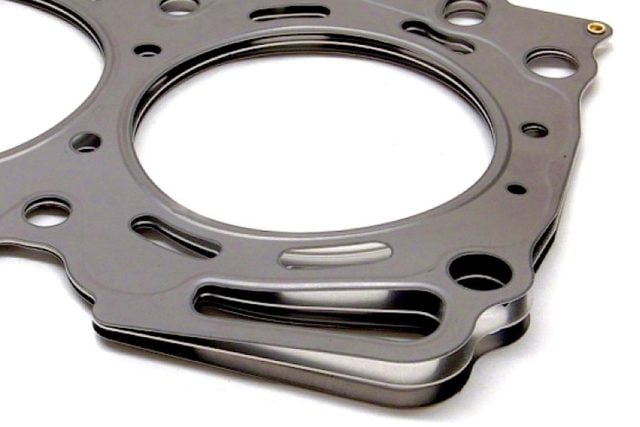
The outer layers are embossed, but also feature a special coating to help it conform to both the head and block surfaces.
The benefit of MLS gaskets is realized once the engine’s cylinder pressures rise above that which would normally blow-out a composite gasket, and their survival is due to their design.
The standard MLS gasket is a three layer, while thicker gaskets (.056 up) are a five-layer build. Micky Hale, Cometic Gaskets
Why would a gasket that is firmly compressed between the head and block need a spring rate? Because one of the key factors in head gasket failure is how much the head lifts away from the block. Although imperceptible, the pressures exerted inside the combustion chambers can indeed lift the cylinder head and introduce the opportunity for gasket failure. An MLS gasket’s ability to allow for this is why they are highly recommended for supercharged or nitrous applications.
Ron Rotunno, Product Manager for Federal-Mogul Motorparts explains the concept of MLS gaskets this way, “Head lift occurs in any running engine. As cylinder pressure builds, the cylinder head wants to lift off the block. Some engines exhibit more head lift than others. The internal structure of the head and the number and size of head bolts play a role. What head lift does is unload the combustion seal of the head gasket and allows combustion gases to leak from cylinder to cylinder, to coolant passages, or outside the engine.”
He goes on to say, “Think of an MLS gasket as a big, flat spring, as the embossments on each layer stack up to form that spring. When the head lifts, that spring maintains contact pressure between head and block to keep the seal. From a design standpoint, the more head lift we measure, the more layers we use; we build a bigger spring.”
MLS technology can benefit both old and new engines. But, if your engine was originally designed for composite gaskets, you will want to have the surfaces checked to make sure that they are smooth enough for MLS gaskets or have them remachined.
Other contributors to head gasket failure could be improper ignition timing, improperly calibrated torque wrenches used during assembly, improper fastener use that may allow for uneven clamping force, and even localized hot-spots within the cooling system can all overcome a head gasket’s ability to seal. While MLS head gaskets help ensure a solid seal, assemblers and engine tuners need to do their part to give any gasket a fighting chance.
We asked Ron when enthusiasts should opt for the added sealing MLS head gaskets can provide. “There’s never really a situation where using an MLS head gasket is a bad idea, but there are instances where not using an MLS head gasket could get you into trouble” he says. “If you’re building a street engine that is naturally aspirated, uses no nitrous, and has a compression ratio in the 12s or less, you can go ahead and use a composite-style performance head gasket. Builders making big horsepower have used these for years and continue to do so. Conversely, we strongly recommend using MLS on boosted and nitrous equipped powerplants. Why? Head lift and heat. More power makes more heat, and MLS is bulletproof when it comes to temperature resistance.”
A Few Things To Consider
Even MLS gaskets need to be given a fighting chance to do their job properly. There are three things to consider before bolting down those heads on your engine – straight, smooth, and clean.
The best sealing surface is a freshly-machined block and heads intended for MLS gaskets. If your surfaces have machining (witness) lines or if the block and heads were machined for O-rings, you will need to resurface them to use an MLS gasket.
Straight – Both sealing surfaces must be flat to allow for a proper seal. Fel-Pro’s recommended maximum limit for flatness is .004-inch lengthwise and .002-inch width for V-8 engines. A maximum out-of-flat of .001-inch in any 3-inch diameter should not be exceeded.
Smooth – Also called surface roughness. How smooth the surface is will dictate how well the head gasket can seal. There are two measurements of surface roughness (with all values in micro-inch – µin) Ra is the average roughness height, and Rz, is the average peak-to-valley roughness height.
Composite gaskets will typically like surfaces ranging from 60-80 Ra (360-480 Rz), as surfaces much rougher than this will limit gasket conformance. MLS head gaskets favor smoother finishes and only a maximum roughness of 30-80 Ra (180-480Rz) are recommended. Check with your gasket’s manufacturer for specifics, but when it comes to MLS gaskets, smoother is always better.
Clean – When micro-inches matter, any foreign material can hinder a quality end result. That’s why MLS head gaskets are designed to be installed dry. As mentioned, they already have a coating on the external surfaces of the gasket to promote sealing to the mating surfaces of both head and block. While MLS gaskets from various manufacturers may differ from one another, all gasket manufacturers agree that no other sealer is necessary or should be used with MLS gaskets.
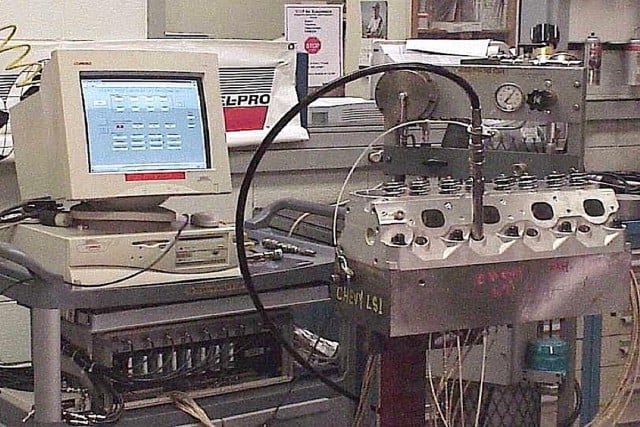
Fel-Pro engineers developed a test rig that feeds over 2,000 psi of compressed air into a cylinder head’s combustion chamber, then linear displacement sensors measure how far the head lifts or moves away from a base that resembles the cylinder block. The data acquisition compares not only sensor to sensor within a cylinder, but also cylinder-to-cylinder numbers.
We wondered if that special coating might limit the gasket’s use for a mock build-up and measuring. According to Micky Hale at Cometic, “Cometic head gaskets can be used in a mock-up situation and then used in final assembly with no issue. Once the engine has been run and heat cycled, we do not recommend the reuse of the gasket. Also, with our special polymer coatings, no additional sealants are recommended.”
Beyond MLS
Today’s MLS head gaskets can solve many issues that performance enthusiasts may experience with their high-performing engines, but in some extreme situations, simply using an MLS gasket might not be enough.
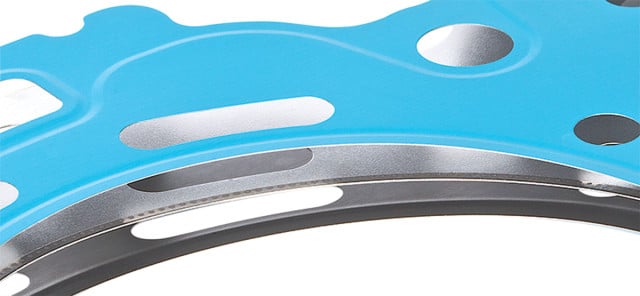
Notice the stainless steel ring with small, evenly spaced “dots” inside the cylinder opening. This ring and the many tiny spot welds made by a precision laser are the Fel-Pro PermaTorque MLS LaserWeld™ stopper layer.
There are also MLS-style head gaskets that incorporate a “stopper” feature that helps ensure an even, more positive seal around the cylinder bore. Federal-Mogul’s version is called the Bead-on-Stopper (BOSTEC) gasket, and Cometic calls theirs the MLX (Multi-Layer Stopper) gasket. Don’t fall into the “bigger must be better!” mentality though. If you’re thinking that your application calls for an MLS gasket with a “Stopper” feature, be sure to check with the gasket manufacturer to see if your application really warrants one.
Micky states, “Our MLS head gaskets can be tailored to fit the customer’s needs by adjusting bore sizes and thickness in multiple combinations. We can manufacture most head gaskets as thin as .027-inch up to .140-inch with a couple steps for every .010-inch increment. The MLX gasket is the extreme version, meaning it will hold up to applications using more boost, nitrous, or turbocharging. The gasket has an internal fold-over in the middle layer, providing premium sealing around the combustion area, but the bore size and thickness for the MLX version is limited because of the tooling process.”
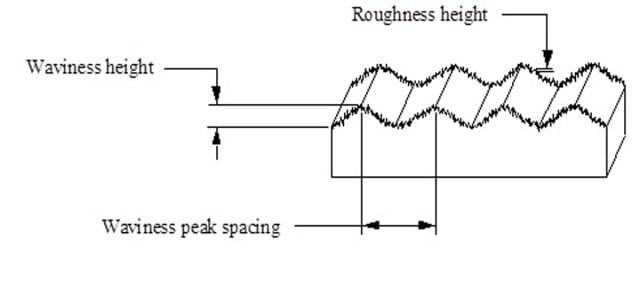
A good sealing surface not only means smooth, but also straight. Checking for waviness as well as how rough the surface is will help determine MLS gasket sustainability.
Also, if your engine has previously been machined to utilize an O-ring seal around the cyliders, you’ll either have to machine that surface flat or find another gasket. MLS head gaskets don’t work well with any imperfections on the sealing surface, intended or not.
The Bottom Line
There’s no denying that technology has helped us make more power from our engines, and have given us unprecedented reliability in the process. Technology applies to more than simply gadgets, there are also techniques that make it all work together and the advanced technology that MLS head gaskets bring to the enthusiast are no different. Take the steps necessary to allow them to work properly and you will reap their benefits for years to come.


